Tropical Annual Sundew (Drosera) Cultivation
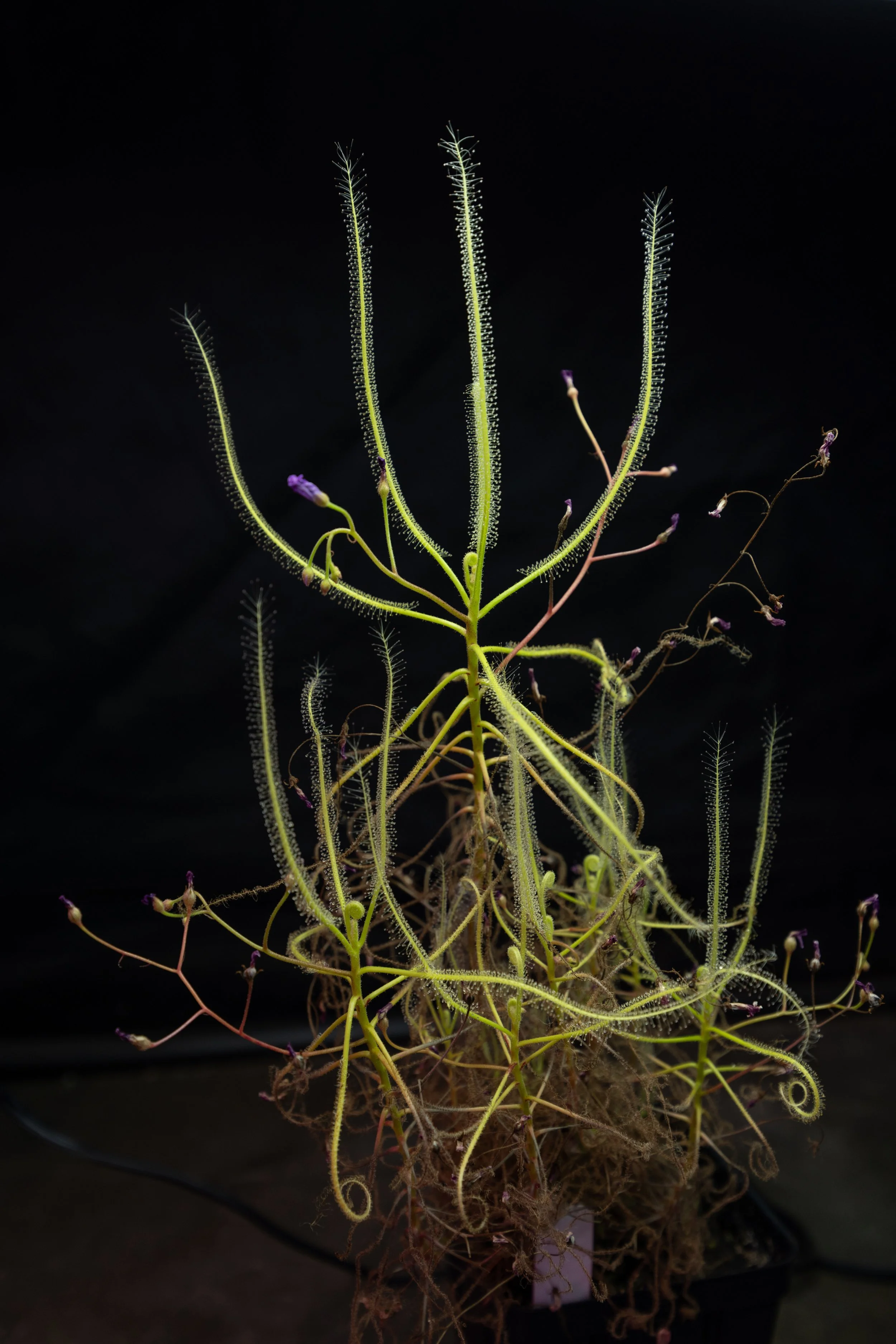
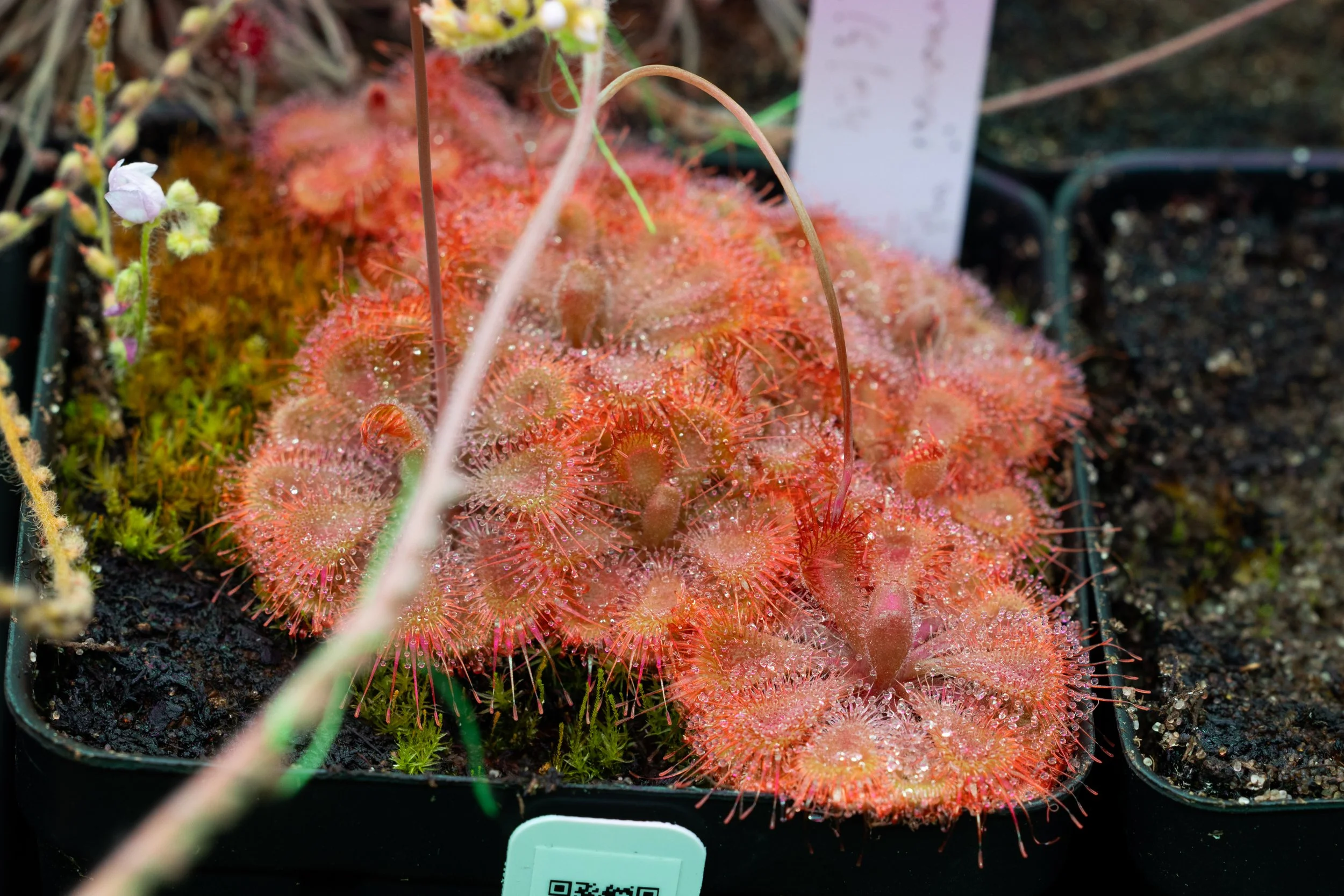


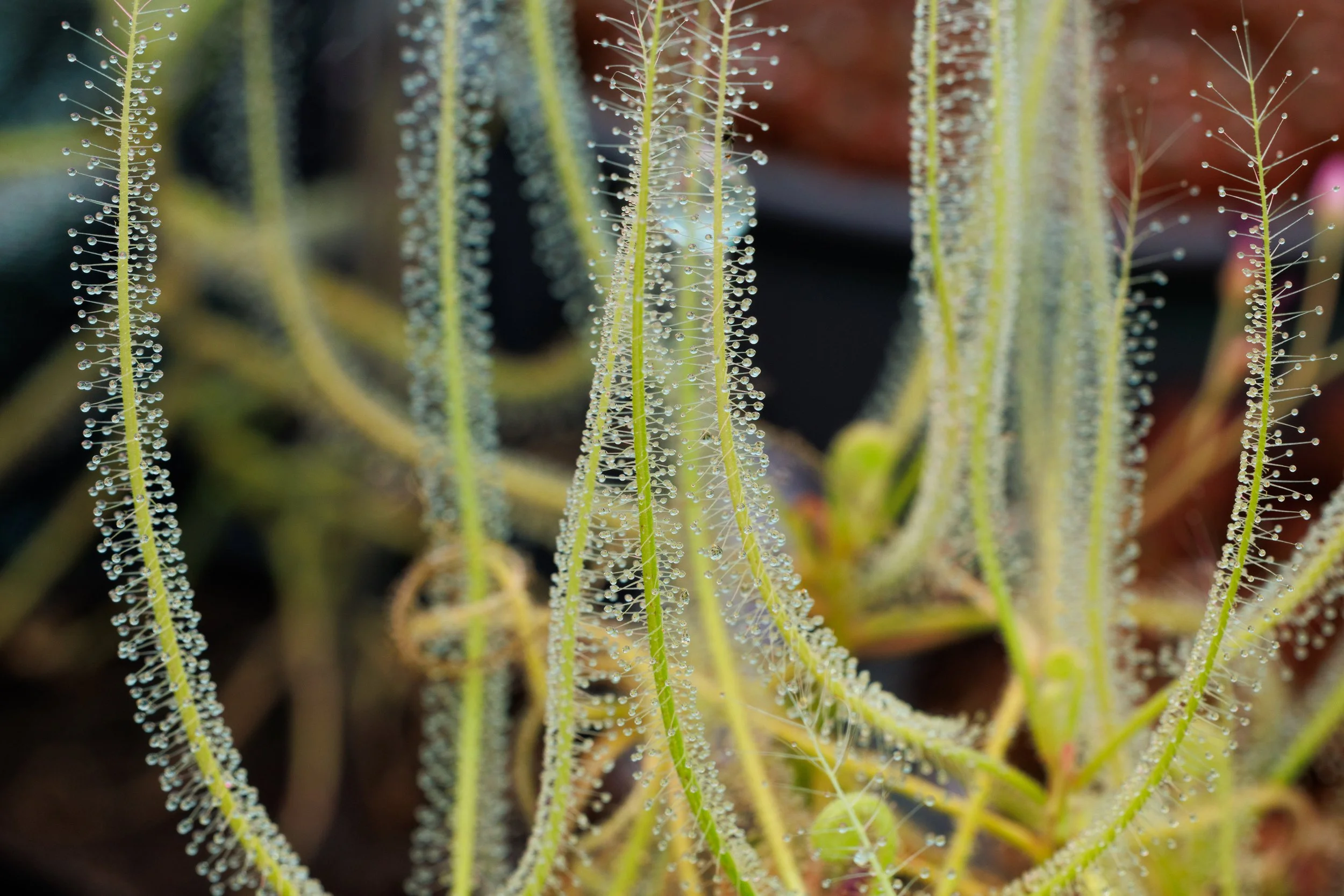
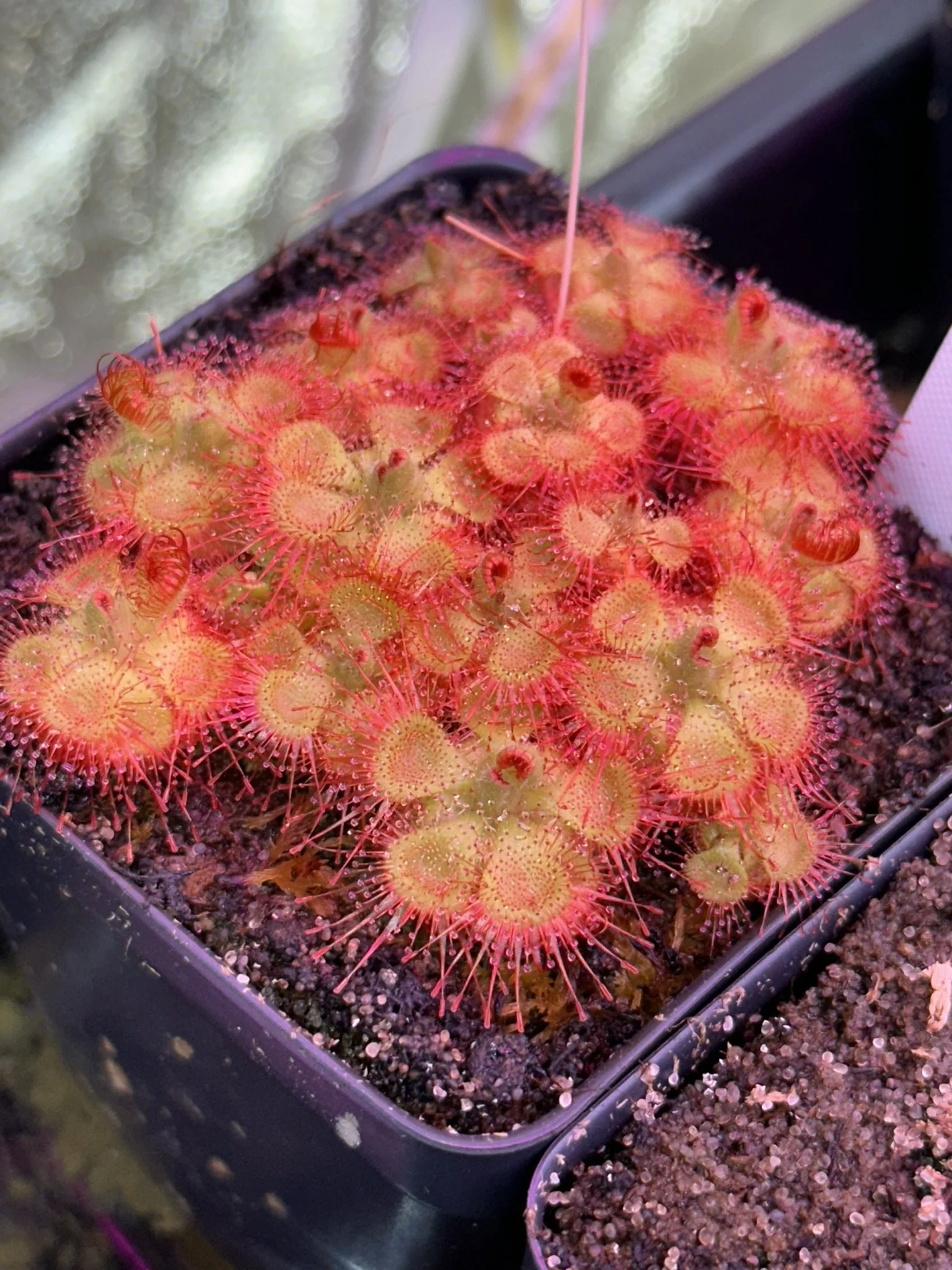
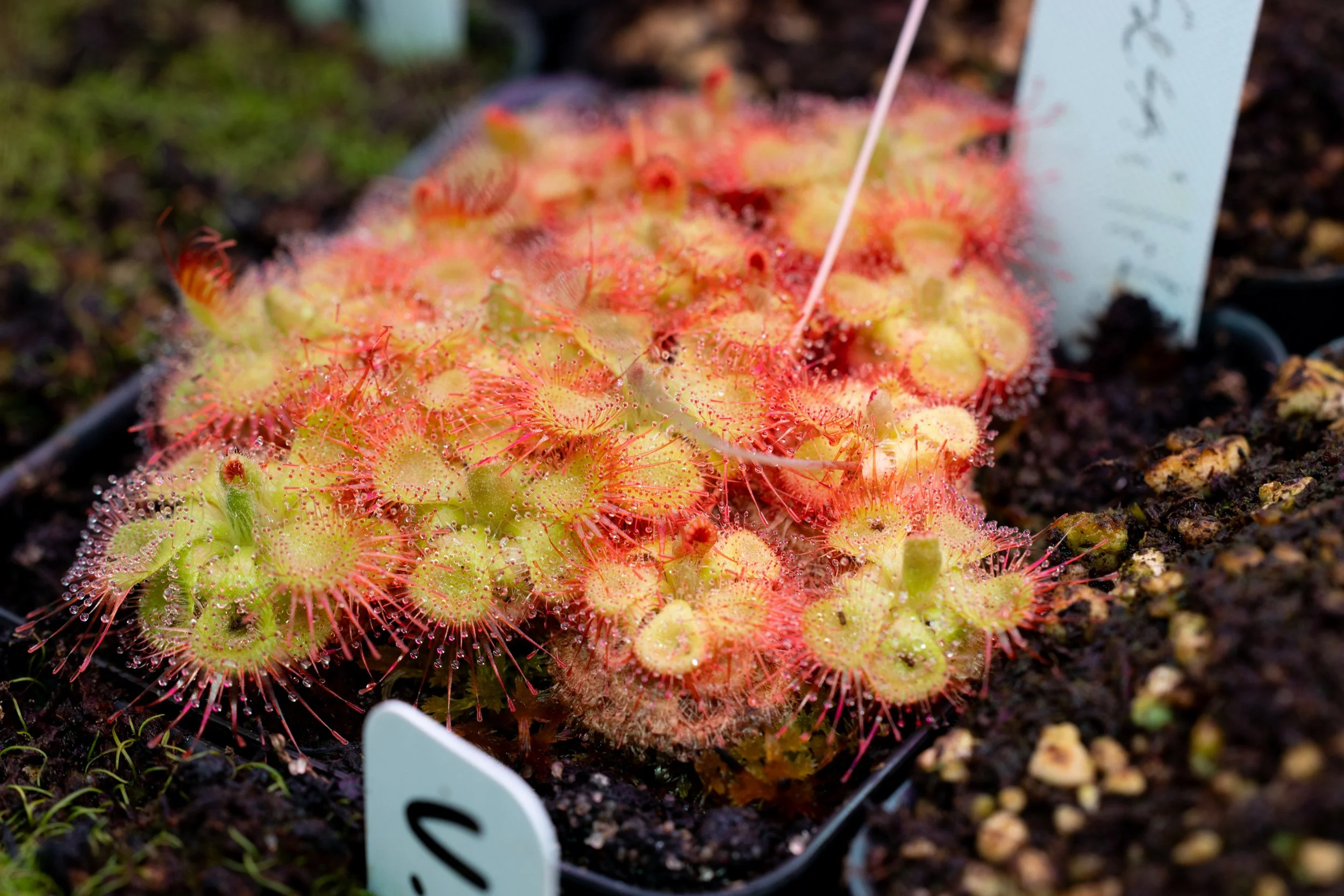

General Info:
Tropical Annual Sundews are a loose grouping of Sundews from tropical regions with distinct wet and dry seasons. Because of this climate, they are typically annuals in the wild and short-lived in cultivation. However, they generally produce copious amounts of seed and readily germinate under the proper conditions. Included in this grouping are the spindly Arachnopus sundews (formerly referred to as the Drosera indica complex) which contains roughly a dozen species. These all grow vertical or scrambling stems with thin, linear leaves reminiscent of spider legs. Most species are found in Northern Australia, while a few species can be found in a broad region of Southeast Asia and beyond. Many species grow up to around 12” tall and have extremely odd, miniature structures on their leaves besides the carnivorous tentacles – some shaped like Y’s, some like little mushrooms, and others colorful or reflective. The functions of these structures are not fully understood. The flowers can range in color from pink, white, magenta, cerise, and orange. Some species have a sweet, honey-like fragrance as well.
The other sundews grouped into Tropical Annuals are the many forms of Drosera burmannii and the elusive Drosera sessilifolia. Drosera burmannii is widespread throughout Southeast Asia and Northern Australia and can vary in form throughout its range. It forms small rosettes with variable green to red leaves and tentacles. At the margins of the leaf are specialized “snap” tentacles which lack dew drops, but fold over within second when touched. These seem to function to pull in prey closer to the sticky part of the leaf for capture.
Drosera sessilifolia looks very similar, but with more erect leaves with a slightly different shape. It is also native to South America as compared to Asia/Oceania. Many plants labeled as sessilifolia are in fact Drosera burmannii and Drosera sessilifolia is not widely in cultivation and is a topic of debate for Sundew enthusiasts. Growing Drosera burmannii is easy in warm and bright conditions. It usually grows in exposed, sandy areas with lots of sun.
Species: Drosera serpens, Drosera finlaysoniana, Drosera burmannii
Seed Germination:
The seeds can germinate readily in warm conditions, however they can sometimes sit dormant in the pots for many months (or more) waiting to germinate. This could correspond to the natural seasonality where seed production occurs at the beginning of the dry season, and the seeds must wait roughly 6 months for the start of the wet season. Patience is key for these species, and they should be given time. I have had excellent germination approximately 8 months after sowing seeds.
Cultivation:
Cultivation is similar for both the Arachnopus Sundews and Drosera burmannii. They like bright light, regular and heavy feeding, warm climate, and a bit of humidity. Overall, quite easy with enough light and in wet conditions and great under LED lights.
Lighting: Part to Full Sun or 20W per sq ft LED light. Arachnopus Sundews prefer very strong light to grow robust stems (lower light will cause it to tip over sooner and scramble along the ground). Drosera burmannii grows most vigorous and colorfully in strong light.
Water: Distilled or Reverse Osmosis water. Sitting in 0.5”-2” of water using the tray method. Different species have different preferences for moisture.
Climate: Temperatures from 50-100F, and not picky about humidity. Most can do well outdoors in bright sun.
Soil: In general, they can be grown in a 30-50% peat: 50-70% perlite/sand (though different species can prefer different mixes, check the individual pages).
Feeding: Feed leaves with Fish Food Powder every 1-2 weeks or more. Can also be fed with ~200-400ppm MaxSea or Dynagro Foliage Pro by spraying on the leaves. Feeding is essential for annual species to ensure they mature within the growing season and they will respond rapidly to heavy feeding.
Notes:
Some forms of Drosera finlaysoniana and Drosera serpens seem to prefer more subtropical conditions versus the very hot and humid tropical conditions of other forms/species. The two forms that I grow seem to prefer less heat and humidity (likely a result of North American/European growers having more success with this form versus more tropical forms).
Seeds can take from weeks to months to germinate, so patience is necessary.
Once these species reach maturity, they will flower constantly until they die. Be sure to assist pollination if necessary and collect the seed.
More Information:
https://www.carnivorousplants.org/grow/guides/Dburmannii_Dsessilifolia